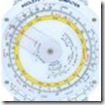Thanks to Keith Smith from PilotEdge for sharing this video which shows a PFC Modular Flight Deck with a working Garmin 430 and live, simulated ATC.
[youtube]http://www.youtube.com/watch?v=6P3UkrDLugg[/youtube]
Golf Hotel Whiskey: for pilots and aviation enthusiasts
Thanks to Keith Smith from PilotEdge for sharing this video which shows a PFC Modular Flight Deck with a working Garmin 430 and live, simulated ATC.
[youtube]http://www.youtube.com/watch?v=6P3UkrDLugg[/youtube]
I use FlightStar and JeppView to plan my trips. The software is easy to learn, although there are some power user features that take more time and parts of the interface are idiosyncratic. With the optional weather downloads and JeppView software, you can set up an aircraft, plan a route and print out a complete trip kit with approach plates, enroute charts and pilot log.
It can display Jeppesen-style VFR charts and airways. You can also view VFR plates for airports and IFR approach plates. These charts are updated automatically over the internet. It’s powerful stuff and good enough for a corporate flight department. The only downside is the price. For the IFR version with European charts, it costs me around €1700 a year.
Cheaper (possibly free) alternatives include Autoplan IFR for planning airways trips and Tony Griffiths’s Cross-wind, which is a comprehensive VFR flight planning program.


goFLYING has a couple of useful features. The first is a mashup that lets you plan flights using Google maps and then input wind direction and speed, fuel burn and so on to generate a navigation log. It will save these out in A4 or kneeboard format for use in-flight. Thanks to Google’s satellite maps, it’s very easy to pick out waypoints and the database seems to have all the airports in it, so you can just search for, say, Denham, and it’ll make it a waypoint.
This is likely to be most useful for VFR pilots, helicopter pilots trying to find landing spots and for familiarising yourself before a flight. However, it is very easy to use and could be a good substitute for commercial VFR flight planning software. It is, after all, free.
You can also import your GPS track file and see your actual flight track superimposed on the map.
The second is a tool that calculates sunset and sunrise in different places at different times of year. This is very handy for working out official night.
As a kid, Matt Wietlispach built airplanes and spaceships. Big ones with blankets for fuselages and kitchenware for the cockpit. Growing up hasn’t stopped him. In his basement lurks a hand-built, fully functioning, military flight simulator.
In a thirty-hour-a-week quest for the ultimate simulated experience, every gauge, dial, switch and light in his cockpit is fully operational. He’s got a head-up display, a g-suit, an oxygen system, even a military-surplus ejection seat. Microsoft’s Flight Simulator is at the heart of the system; but coders at Redmond wouldn’t recognize it because of Wietlispach’s extensive customization. It requires five networked computers and an industrial power supply, but there is one concession to comfort: a retractable cup holder.
In the real world he is an avionics engineer for a major manufacturer, where he works on integrating cockpit systems for military aircraft. “It’s close to what I do in the basement but on a different scale.”
He is unusual in the sim-builder community because he prefers old-fashioned electro-mechanical instruments to LCD displays. This increases his workload dramatically: “all the interfaces have to be built from scratch and there are hundreds and hundreds of wires. It just takes forever,” he says with the zeal of a purist.
He’s been working on it for five years and there’s no end in sight. “What takes so long is that I keep changing it,” as he finds new, more intricate components on the internet or in the junk shop at work. The latest development is hidden cameras focused on the pilot and the instrument panel to record test flights. Just like they do at work.
“I never thought I would get as far with it as I did. And neither did my wife,” who calls herself a sim-widow, “I must have spent thousands of hours and thousands of dollars on it. I’d probably freak out if I knew exactly how much.” It is his craftsman’s appreciation of the engineering in these precision devices that has seduced him. “I think I must have been a watch-maker in a previous life.”